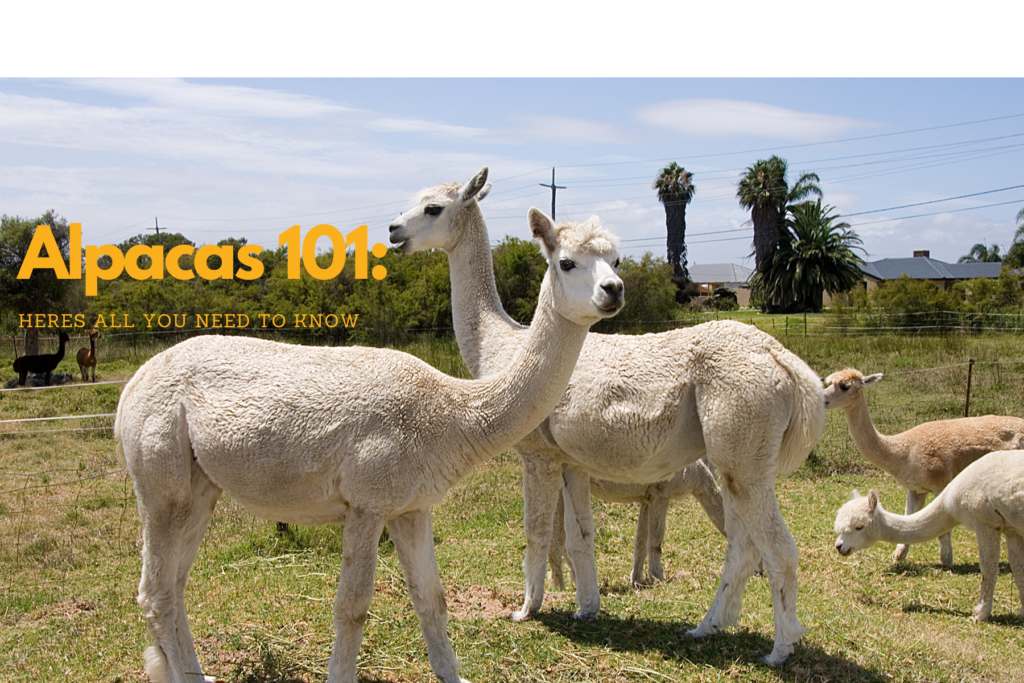
Cousins of the camel, these long-necked animals can add a dose of fibre and fun to your small farm.
Alpacas are members of the Camelidae family, which also contains two-toed (nonhoofed) animals, such as classic one-hump desert camels and rarer two-humped Bactrian camels. Many Australian small farmers are drawn to the alpaca’s versatility and the minimal impact they have on the natural environment.
Alpacas can be used as guard animals and can produce fleece and meat but before bringing alpacas onto your property there are a number of considerations.
Reasons for keeping alpacas
Guard animal
Alpacas are often used as herd guards and are very effective against foxes which might attack lambs or sheep that are down. However, be aware that they are in just as much danger from wild dogs as sheep.
Revenue Stream
It has been estimated that alpacas are 30% more efficient grazers than sheep. Income from alpacas is generated from selling animals or their fleece. Many breeders value-add and sell finished products made from their own fleece.
The Australian Alpaca Association (AAA) assists with a centralised collection service for Australian Alpaca Fleece Ltd who ship fleeces directly to Peru for grading and processing into garments. These are then returned to Australia for sale to the retail industry. The finest fleeces attract the higher value. Work is underway to develop an alpaca meat industry. Alpaca meat is high in protein and low in fat. Alpaca meat products are already for sale from some businesses in eastern Australia.
Deciding what kind
The most basic decision you need to make is what kind of alpaca you want on your alpaca farm. There are two types of alpacas:
Huacaya is the more common breed. Huacaya alpaca fiber is similar to sheep’s wool: It stands perpendicular to the animal’s body and is very dense.
Suri alpaca fleece is more like an Angora goat’s hair: It has longer locks of fleece that hang down against the body.
Paddock essentials
Alpacas require similar fencing to sheep, preferably without barbed wire and shade in each paddock. It is important to have a suitable yard or catch pen for welfare checks, to administer injections or to catch animals for shearing. Fenced laneways between paddocks will help facilitate the movement of animals with minimum stress for animal and owner.
When breeding alpacas landholders need to have quarantine and nursery paddocks. Nursery paddocks should be situated in a sheltered location, preferably near the house. This will facilitate the monitoring of females as they go into labour.
The quarantine paddock should be either on the boundary of the property or near key animal handling facilities. It should also have wash down facilities. New or sick animals should be held in the quarantine paddock until they improve or have been vet checked and have excreted any weed seeds they may have brought from their place of origin.
Feed and water
Alpacas are pseudo-ruminants, meaning they have one stomach with three compartments. They should be pasture fed at all times and do well on native pastures. However, alpacas can be supplemented with good quality hay and/or various grains.
How many alpacas a property can support will depend on what sort of pasture and how much pasture your land is capable of producing. Alpacas will eat about 2% of their body weight in feed per day.
Like other livestock, alpacas can also be affected by perennial ryegrass toxicity, annual ryegrass toxicity (ARGT) or phalaris toxicity.
Check with your vet for information on all diseases, the likelihood of occurrence and testing opportunities.
Alpacas need to always have access to fresh water. Each animal may drink as much as 4L/day.
Shearing
Alpacas are shorn once a year usually during spring. Shearing is the biggest maintenance task required and usually takes about seven minutes per animal for an experienced alpaca shearer.
Health
Alpacas are relatively disease free, but like all animals they need to be monitored to ensure they stay in optimum health. They are vaccinated twice a year with the same vaccines as used for sheep in the local area. Alpacas are essentially free from fly strike, foot rot and generally defecate in one spot so have a relatively low worm burden.
When buying alpacas especially for breeding purposes, it is advisable to arrange for a vet check to ensure the animals purchased are healthy. The alpaca industry employs body condition scoring systems that are similar to those used for other livestock. Regular monitoring of the flock’s average body condition is one way to determine the health of animals regardless of how much fleece they are carrying.
Alpaca Foot Care
Alpacas have two toes with hard toenails. The toenails need to be trimmed occasionally.
Interesting alpaca facts:

Further Information visit the DPIRD Basics of alpaca keeping.
For information on alpaca products call us on 9651 1312 or drop into our Moora or Yerecoin stores; we’re a local family-owned business and we love helping our customers.
Join now for instant savings!
No Shipping Fee on your first order. Join now for instant savings! *T&C’s apply